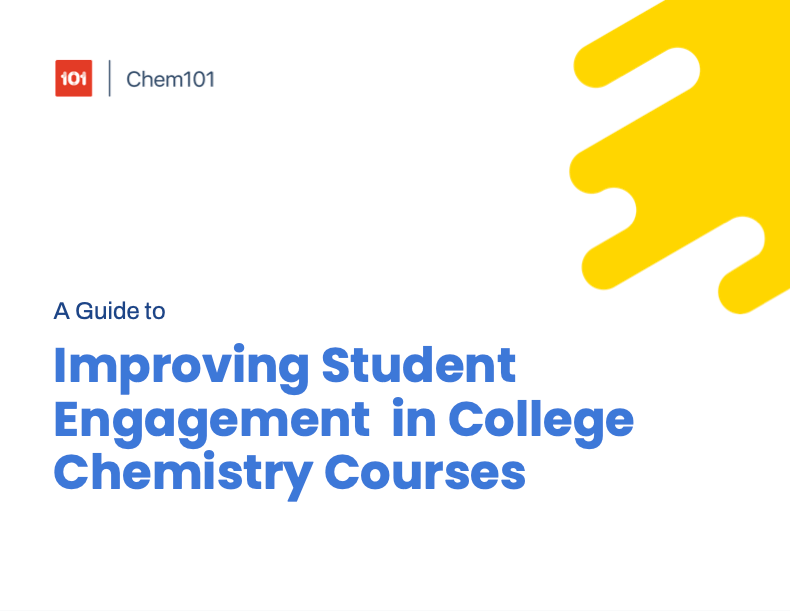Among the large number of courses that students (non- and STEM majors alike) will take as part of their college degree program, chemistry can be one of the most challenging to learn and to teach. As can be expected, such a complex subject comes with an equally complex set of challenges. Students often find themselves struggling with concept visualization, complicated syntax, and insufficient tools for modeling and practice.
As more college courses are being taught online (in both synchronous and asynchronous formats), these challenges can intensify. Students need frequent feedback and guidance to help them advance forward and instructors need effective ways to measure progress and offer meaningful support and instruction.
Fortunately, there are methods that can be employed to help ensure students are actively engaged and building chemistry mastery at every level, resulting in improved student outcomes.
Re-think how you teach chemistry
While it has lead to innumerable changes in the way society does (and understands) the world around us, the subject of chemistry isn’t exactly a harbinger of change when it comes to instruction. In order to improve student performance, you must be prepared to adapt your teaching to meet students’ needs and bridge knowledge gaps.
This means implementing updated tools, materials, and/or assignments that assess and provide meaningful feedback identifying your students’ areas of strength and weakness. As you identify areas where students commonly struggle, provide extra supporting resources and practice to help illustrate these concepts more effectively and increase mastery.
Keep your students engaged
While the standard lecture format is common in chemistry courses, it doesn’t exactly reflect the educational landscape of today (especially in the post-COVID era). Not only is adjusting your approach and implementing new methodologies a great way to adapt, but it can help chemistry come to life for your students, keeping them engaged as they master new concepts.
Leveraging practices such as the “Flipped Classroom” model, and other active learning methods wherein students can participate or interact with the learning process (as opposed to passively taking in the information) keeps students engaged while boosting their confidence and improving learning outcomes.
Reduce barriers to learning
Another pain point for students can be a lack of access to the materials and technology needed for their courses. This can include difficulty affording expensive textbooks, clickers, software, or modeling kits.
Adapting to the ever-changing needs of students means being open to leveraging outside resources like educational technology (edtech). Whether you’re utilizing low-cost options (open source and/or free software) or sourcing edtech tools that meet students where they are (such as a device-agnostic tool like Aktiv Chemistry), these tools should be easy to use for all parties involved. They should also allow for real-time feedback so that you can better identify where students are struggling and address their needs, further reducing any barriers to learning.
Whatever tools or methodologies you choose, they should be keeping students engaged. By fostering a student-centered environment with an emphasis on active learning, you’re sure to improve learning outcomes and set your students up for long-term success.
Read the Free eBook
If you’d like to learn more about how to keep college-level chemistry students engaged, download the full guide.




